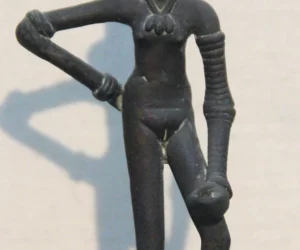The Dancing Girl of Mohenjo-daro: A Timeless Bronze Masterpiece The Dancing Girl is a captivating bronze sculpture that offers a glimpse into the artistic achievements and cultural life of the ancient Indus Valley Civilization. This captivating artifact, crafted around 2300–1750 BC, continues to intrigue us today. Let’s delve deeper into its history, artistic merit, and…
The Indus Valley Civilization
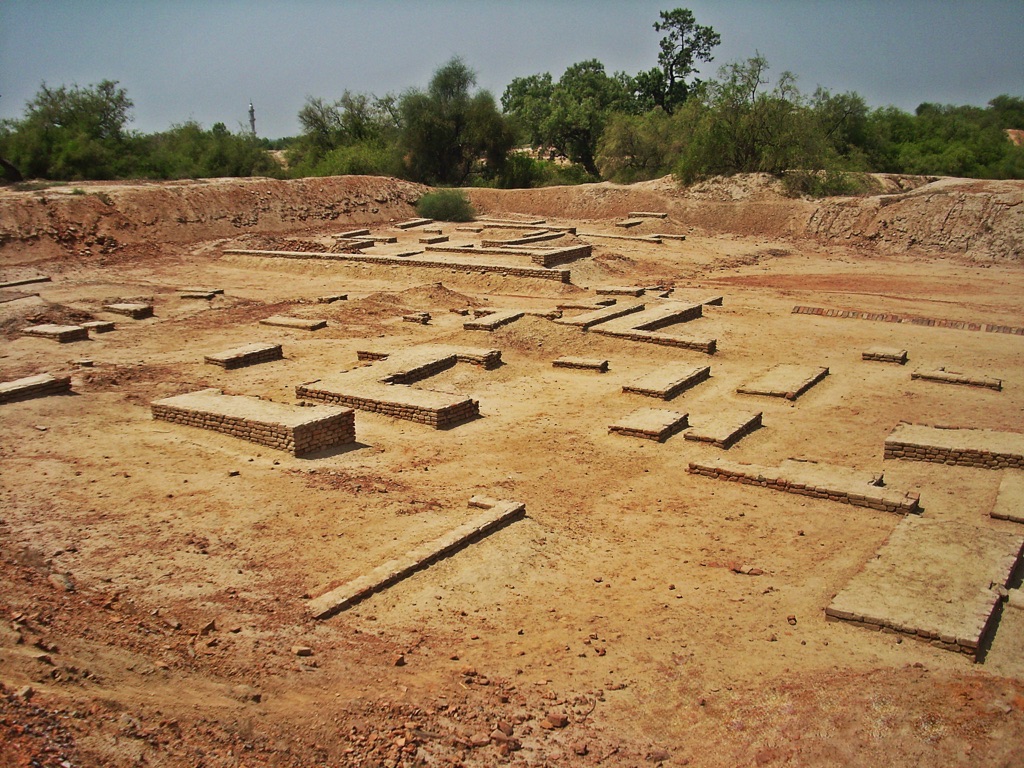 The Indus Valley Civilization (sometimes called the Harappan Civilization), one of the earliest urban societies in the world, is renowned for its significant contributions to urban planning and architecture. Emerging around 3300 BCE and thriving until approximately 1300 BCE, it spanned a vast territory in what is now Pakistan and northwest India. This civilization is celebrated for its sophisticated engineering and urban planning techniques, exemplified by the cities of Harappa and Mohenjo-Daro. These cities boasted well-organized streets, advanced drainage systems, and efficient waste disposal methods. The civilization’s use of standardized weights and measures underscores its strong trade and economic systems. Additionally, the people of the Indus Valley developed a unique form of writing that, despite extensive efforts to decipher it, remains a mystery, leaving many aspects of this civilization shrouded in secrecy. In contrast to many of its contemporaries, the Indus Valley Civilization exhibited a high degree of social organization and a relatively egalitarian society. The absence of clear evidence for a ruling monarchy or a dominant religious hierarchy suggests that this culture might have operated in a more collaborative manner than others of its era. Artifacts such as pottery, jewelry, and toys provide insight into the daily lives and artistic expressions of its people. The reasons behind the decline of the Indus Valley Civilization remain speculative, with theories ranging from environmental changes and shifts in trade routes to possible invasions. However, the enduring legacy of the Indus Valley people, particularly their innovative urban planning and intricate craftsmanship, continues to influence and inspire subsequent South Asian cultures. Comparisons with other ancient civilizations often raise questions about the relative age of the Indus Valley Civilization. It is intriguing to note that it was contemporary with the civilizations of ancient Egypt, Mesopotamia, and Crete, forming part of the group of four early cradles of civilization. This places the Indus Valley Civilization among the oldest in human history, though pinpointing which civilization is the oldest can be challenging due to the different timelines of their respective peaks and the continuous discoveries that update our understanding of their histories.
The Indus Valley Civilization (sometimes called the Harappan Civilization), one of the earliest urban societies in the world, is renowned for its significant contributions to urban planning and architecture. Emerging around 3300 BCE and thriving until approximately 1300 BCE, it spanned a vast territory in what is now Pakistan and northwest India. This civilization is celebrated for its sophisticated engineering and urban planning techniques, exemplified by the cities of Harappa and Mohenjo-Daro. These cities boasted well-organized streets, advanced drainage systems, and efficient waste disposal methods. The civilization’s use of standardized weights and measures underscores its strong trade and economic systems. Additionally, the people of the Indus Valley developed a unique form of writing that, despite extensive efforts to decipher it, remains a mystery, leaving many aspects of this civilization shrouded in secrecy. In contrast to many of its contemporaries, the Indus Valley Civilization exhibited a high degree of social organization and a relatively egalitarian society. The absence of clear evidence for a ruling monarchy or a dominant religious hierarchy suggests that this culture might have operated in a more collaborative manner than others of its era. Artifacts such as pottery, jewelry, and toys provide insight into the daily lives and artistic expressions of its people. The reasons behind the decline of the Indus Valley Civilization remain speculative, with theories ranging from environmental changes and shifts in trade routes to possible invasions. However, the enduring legacy of the Indus Valley people, particularly their innovative urban planning and intricate craftsmanship, continues to influence and inspire subsequent South Asian cultures. Comparisons with other ancient civilizations often raise questions about the relative age of the Indus Valley Civilization. It is intriguing to note that it was contemporary with the civilizations of ancient Egypt, Mesopotamia, and Crete, forming part of the group of four early cradles of civilization. This places the Indus Valley Civilization among the oldest in human history, though pinpointing which civilization is the oldest can be challenging due to the different timelines of their respective peaks and the continuous discoveries that update our understanding of their histories. 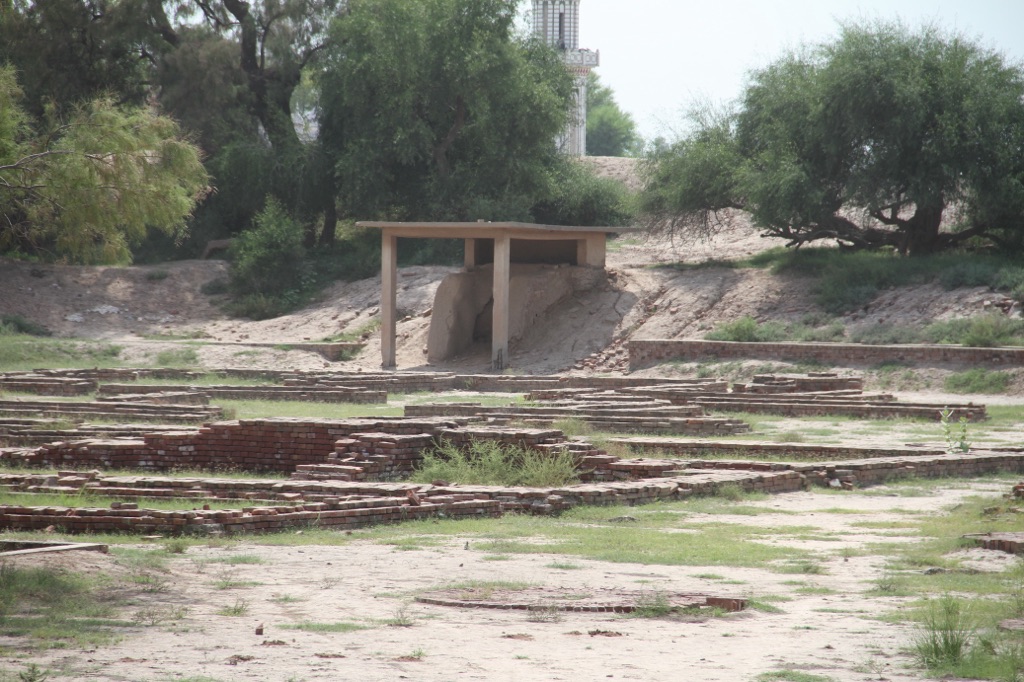 The disappearance of the Indus Valley people and the eventual downfall of their civilization is a topic of ongoing research and debate among historians and archaeologists. Several factors are believed to have contributed to its decline, including environmental changes such as the drying up of the Saraswati River, which was a crucial water source, shifts in trade routes that diminished economic prosperity, and the possibility of invasions by nomadic tribes. These factors, combined or individually, could have led to the gradual abandonment of cities and a return to a more rural way of life among the survivors. Our limited knowledge about the Indus Valley Civilization, especially its undeciphered script, poses a significant challenge in fully understanding its complexities and achievements. The inability to read their writing means that much of what we know comes from archaeological findings and the study of their material culture. This gap in understanding underscores the importance of ongoing archaeological work and the potential for future discoveries to shed light on this fascinating civilization. In conclusion, the Indus Valley Civilization remains a subject of immense interest and mystery. Its advanced urban planning, social organization, and the enigmatic script continue to captivate scholars and laypersons alike. As research progresses, it is hoped that more secrets of this remarkable civilization will be unveiled, offering deeper insights into its contributions to human history and its place among the great civilizations of the ancient world.
The disappearance of the Indus Valley people and the eventual downfall of their civilization is a topic of ongoing research and debate among historians and archaeologists. Several factors are believed to have contributed to its decline, including environmental changes such as the drying up of the Saraswati River, which was a crucial water source, shifts in trade routes that diminished economic prosperity, and the possibility of invasions by nomadic tribes. These factors, combined or individually, could have led to the gradual abandonment of cities and a return to a more rural way of life among the survivors. Our limited knowledge about the Indus Valley Civilization, especially its undeciphered script, poses a significant challenge in fully understanding its complexities and achievements. The inability to read their writing means that much of what we know comes from archaeological findings and the study of their material culture. This gap in understanding underscores the importance of ongoing archaeological work and the potential for future discoveries to shed light on this fascinating civilization. In conclusion, the Indus Valley Civilization remains a subject of immense interest and mystery. Its advanced urban planning, social organization, and the enigmatic script continue to captivate scholars and laypersons alike. As research progresses, it is hoped that more secrets of this remarkable civilization will be unveiled, offering deeper insights into its contributions to human history and its place among the great civilizations of the ancient world.
Indus Valley Civilization Archaeological sites
FAQ: Exploring the Enigmas of the Indus Valley Civilization
What was the Indus Valley Civilization in summary?
The Indus Valley Civilization (IVC) was a Bronze Age civilization that flourished between 3300 BCE and 1300 BCE, primarily in the northwestern regions of South Asia. It is renowned for its advanced urban planning, sophisticated craftsmanship, and early adoption of writing systems. The civilization was centered around the Indus River basin, encompassing what is today Pakistan and northwest India. Its major cities, such as Harappa and Mohenjo-Daro, are noted for their impressive, organized layout, advanced drainage systems, and great public baths, reflecting a high level of social organization and engineering prowess.
Does the Indus Valley Civilization still exist?
No, the Indus Valley Civilization does not still exist. It gradually declined and disappeared around 1300 BCE, transitioning into what is known as the post-Harappan or Late Harappan phase. The reasons for its decline are still debated among scholars, with theories ranging from climate change and river course shifts to invasions by nomadic tribes. However, its legacy persists in the cultural practices, languages, and religious traditions of the Indian subcontinent.
Who started Indus Valley Civilization?
The origins of the Indus Valley Civilization are not attributed to a single founder or group. It developed gradually from the Neolithic cultures of the region, which evolved into a complex urban society. The people of the Indus Valley were primarily indigenous to the area, and their civilization emerged from the agricultural and village communities that had been established in the region for thousands of years prior.
What was the Indus Valley Civilization timeline?
The Indus Valley Civilization timeline can be broadly divided into the following phases: – Early Harappan Phase (3300 BCE – 2600 BCE): This period marks the formation of the first settlements and the development of agriculture, pottery, and small-scale urbanization. – Mature Harappan Phase (2600 BCE – 1900 BCE): This era signifies the peak of the civilization, with the expansion of urban centers, trade, and the development of writing, arts, and crafts. – Late Harappan Phase (1900 BCE – 1300 BCE): During this period, the civilization began to decline, marked by the abandonment of cities, reduced trade, and a decrease in the quality of craftsmanship.
Who discovered Indus Valley Civilization?
The Indus Valley Civilization was discovered in the 1920s by a team led by British archaeologist Sir John Marshall. The excavation of Harappa and Mohenjo-Daro brought to light the existence of this ancient civilization, which had remained unknown until then. Subsequent excavations and research have continued to uncover the extent and complexity of the Indus Valley Civilization.
What was the Indus Valley Civilization’s religion?
The religion of the Indus Valley Civilization remains a subject of speculation due to the absence of decipherable written records. However, archaeological findings suggest a religion that included the worship of both male and female deities, with a possible emphasis on fertility. Symbols such as the swastika, animals (notably the unicorn-like figure), and the “Pashupati” seal, which some interpret as a proto-Shiva figure, indicate a rich symbolic religious life. Ritual bathing in the Great Bath of Mohenjo-Daro might have had a religious or ritualistic significance, pointing towards practices that could have influenced later Hinduism.
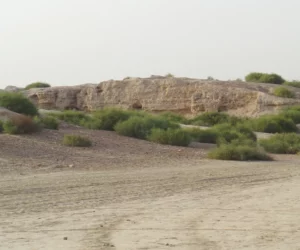
Kalibangan
Introduction to Kalibangan Kalibangan, a significant archaeological site, lies on the southern banks of the Ghaggar-Hakra River in Rajasthan, India. It is precisely located at 29.47°N 74.13°E in the Hanumangarh District, approximately 205 km from Bikaner. This site, notable for its prehistoric and pre-Mauryan character, was first identified by Luigi Tessitori. The full excavation report,…
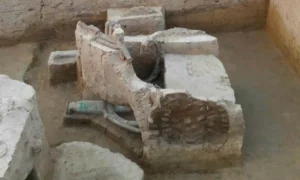
Sinauli
Sinauli, located in western Uttar Pradesh, India, has emerged as a significant archaeological site that offers a unique window into the Late Bronze Age cultures of the Indian subcontinent. The site, situated at the Ganga-Yamuna Doab, has been the focus of archaeological interest following the discovery of Bronze Age solid-disk wheel carts in 2018, which some scholars have interpreted as horse-pulled “chariots”.
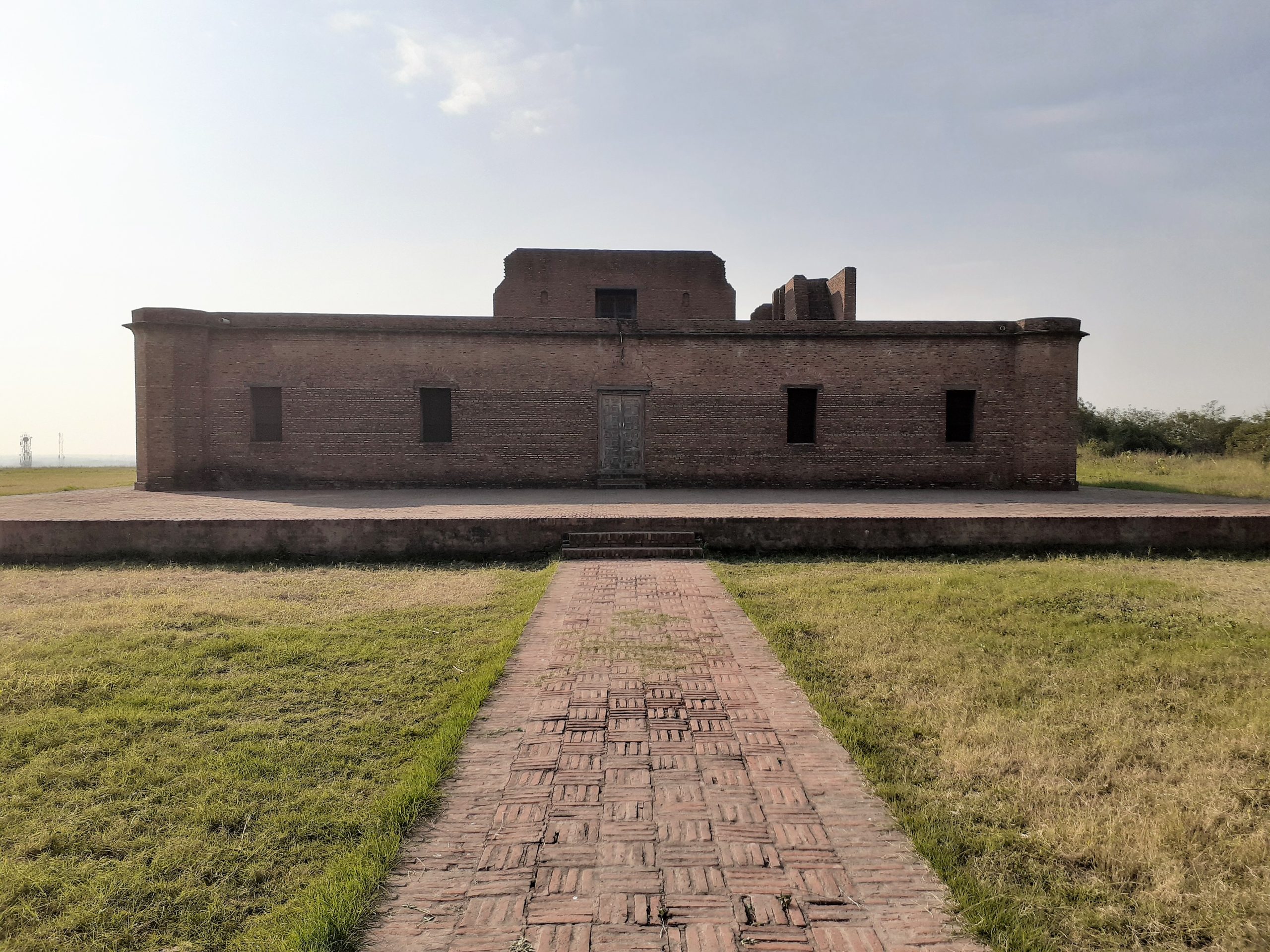
Rupnagar Archaeological Site
Rupnagar, formerly known as Ropar, situated in the state of Punjab, India, stands as a testament to the rich cultural heritage and historical continuum of the region. This site, located on the left bank of the River Sutlej, has been a focal point of archaeological interest due to its significant contributions to understanding the Indus Valley Civilization and its subsequent cultural phases. The Archaeological Museum in Rupnagar, inaugurated in 1998, serves as a repository of the region’s ancient past, showcasing a wide array of artifacts that span from the Harappan era to medieval times.
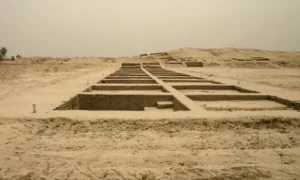
Baror Archaeological Site
Baror, an archaeological site in the Sri Ganganagar district of Rajasthan, India, stands as a testament to the rich cultural tapestry of the ancient Indus Valley Civilization. This site, located near the India-Pakistan border in the Thar Desert, has yielded significant findings that contribute to our understanding of one of the world’s oldest civilizations.
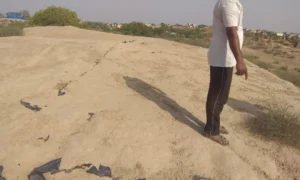
Rakhigarhi
Rakhigarhi, a village in the Hisar District of Haryana, India, stands as a testament to the architectural and cultural brilliance of the Indus Valley Civilization (IVC). Located approximately 150 km northwest of Delhi, this archaeological site, dating back to 2600-1900 BCE, was a significant urban center during the mature phase of the IVC. Despite its historical importance, a large portion of Rakhigarhi remains unexcavated, holding untold stories of our ancient past.

